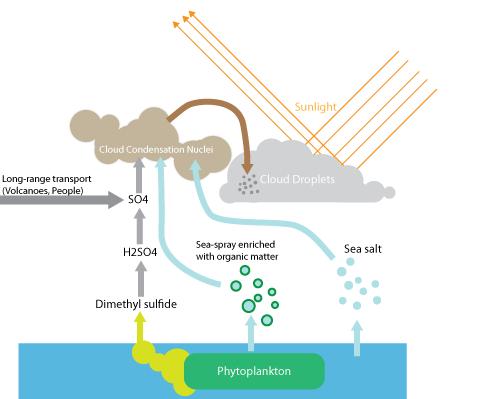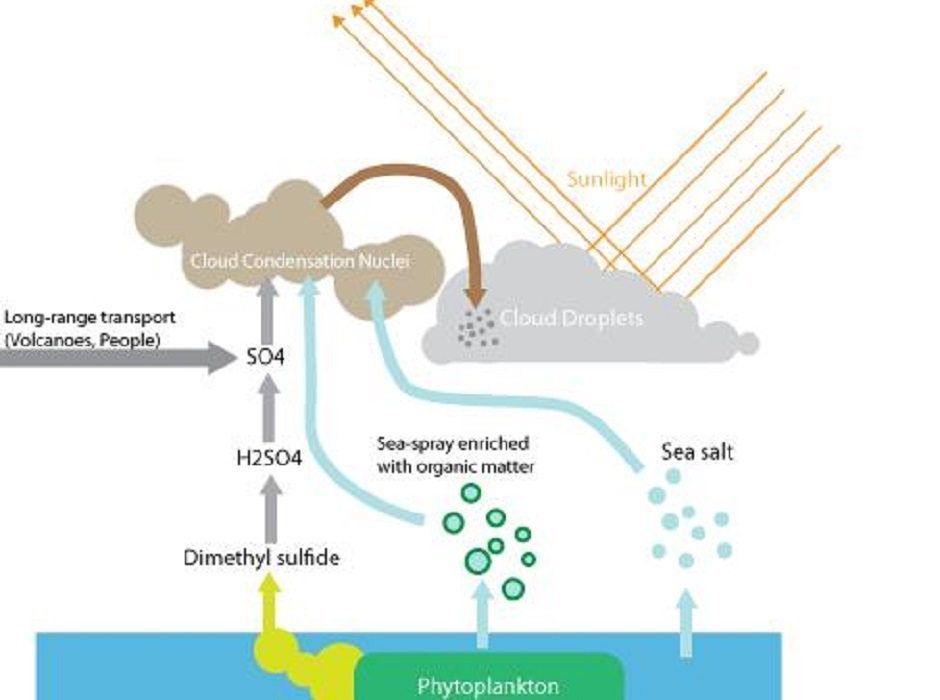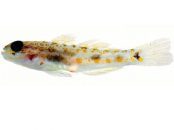[dropcap style=”font-size:100px; color:#992211;”]P[/dropcap]oor scientists, pity their bereft souls. In this case, wondering how the sky might have looked before there were photographs to record it.
Oh if only there were some way that our pre-industrial forebears could have recorded the world around them. Those diffuse skies, those burning sunsets. Those chiaroscuro horizons akin to the work of a Renaissance master…. Oh.
Nobody knows what our skies looked like before fossil fuel burning began; today, about half the cloud droplets in Northern Hemisphere skies formed around particles of pollution. Cloudy skies help regulate our planet’s climate, and yet the answers to many fundamental questions about cloud formation remain hazy.
New research led by the University of Washington and the Pacific Northwest National Laboratory suggest tiny ocean life in vast stretches of the Southern Ocean play a significant role in generating brighter clouds overhead. The results were published July 17 in Science Advances.
The study shows that plankton, the tiny drifting organisms in the sea, produce airborne gases and organic matter to seed cloud droplets, which lead to brighter clouds that reflect more sunlight.
“The clouds over the Southern Ocean reflect significantly more sunlight in the summertime than they would without these huge plankton blooms,” said co-lead author Daniel McCoy, a UW doctoral student in atmospheric sciences. “In the summer, we get about double the concentration of cloud droplets as we would if it were a biologically dead ocean.”
Although remote, the oceans in the study area between 35 and 55 degrees south is an important region for Earth’s climate. Results of the study show that averaged over a year, the increased brightness reflects about 4 watts of solar energy per square meter.
“Life in the ocean has a big effect on clouds,” said co-author Dennis Hartmann, a UW professor of atmospheric sciences.
“This idea has been floating out there as a hypothesis, but there hasn’t been much evidence,” said cloud expert Robert Wood, a UW professor of atmospheric sciences.
McCoy and co-author Daniel Grosvenor, now at the University of Leeds, began this research as UW in 2014 looking at NASA satellite data for clouds over the parts of the Southern Ocean that are not covered in sea ice and have year-round satellite data. The space agency launched the first Moderate Resolution Imaging Spectroradiometer, or MODIS, instrument in 1999 to measure the cloud droplet size for all Earth’s skies.
Clouds reflect sunlight based on both the amount of liquid suspended in the cloud and the size of the drops, which range from tiny mist spanning less than a hundredth of an inch (0.1 mm) to large drops about half an inch (10 mm) across. Each droplet begins by growing on an aerosol particle, and the same amount of liquid spread across more droplets will reflect more sunlight.
 Tiny ocean life contribute to clouds directly, by being lofted up with sea spray, and indirectly, by producing sulfurous gas.
Tiny ocean life contribute to clouds directly, by being lofted up with sea spray, and indirectly, by producing sulfurous gas.
Using the NASA satellite data, the UW team showed in 2014 that Southern Ocean clouds are composed of smaller droplets in the summertime. But that doesn’t make sense, since the stormy seas calm down in summer and generate less sea spray to create airborne salts.
Airborne Salts, Fossil Fuels
The new study looked more closely at what else might be making the clouds more reflective. Co-lead author Susannah Burrows, a scientist at the Pacific Northwest National Lab in Richland, Washington, used an ocean biology model to see whether biological matter could be responsible.
Marine life can affect clouds in two ways. The first is by emitting a gas, such as dimethyl sulfide released by Sulfitobacter bacteria and phytoplankton such as coccolithophores, which creates the distinctive sulfurous smell of the sea and also produces particles to seed marine cloud droplets.
The second way is directly through organic matter that collects at the water’s surface, forming a bubbly scum that can get whipped up and lofted into the air as tiny particles of dead plant and animal material.
By matching the cloud droplet concentration with ocean biology models, the team found correlations with the sulfate aerosols, which in that region come mainly from phytoplankton, and with the amount of organic matter in the sea spray.
“The dimethyl sulfide produced by the phytoplankton gets transported up into higher levels of the atmosphere and then gets chemically transformed and produces aerosols further downwind, and that tends to happen more in the northern part of the domain we studied,” Burrows said. “In the southern part of the domain there is more effect from the organics, because that’s where the big phytoplankton blooms happen.”
Taken together, these two mechanisms roughly double the droplet concentration in summer months.
The Southern Ocean is a unique environment for studying clouds. Unlike in other places, the effects of marine life there are not swamped out by aerosols from forests or pollution. The authors say it is likely that similar processes could occur in the Northern Hemisphere, but they would be harder to measure and may have a smaller effect since aerosol particles from other sources are so plentiful.
Wood is part of a larger team developing a field program to take direct measurements of Southern Ocean clouds and aerosols.
“We have really poor observations of everything in the Southern Ocean, and it’s a really important region,” Wood said. “It also provides a glimpse of how a pristine, pre-industrial area might behave.”
Source: University of Washington
Diagram: Daniel McCoy / University of Washington

Some of the news that we find inspiring, diverting, wrong or so very right.




















